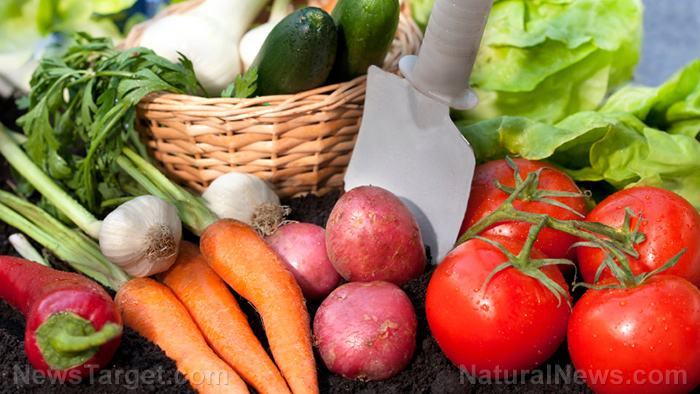
Advertisement
In these troubled times, preppers can rely on their stockpile of supplies and a survival garden in their backyard or homestead.
But if you’re not a prepper and you’re worried about your family’s future amid the coronavirus outbreak, learning how to start a vegetable garden is one way to address your fears of running out of food to eat. (h/t to OldWorldGardenFarms.com)
With a simple, all-purpose garden plan, you have a sustainable way of providing fresh and nutritious food for your family. If you have a 40′ x 60′ area in your yard with good soil, you can soon start a low-maintenance, raised row garden where you can grow vegetables.
Growing food in an organic garden isn’t just good for your family’s health since it eliminates harmful pesticides and GMOs, it also helps you save a bit of money for groceries. If you have excess veggies from your garden, you can preserve and home can them for future use.
Cultivating your own garden also gives you the chance to spend more time outdoors and exercise.
What does it take to feed an average-sized family?
The answer may vary, but the simple garden plan below details how much you’ll need to feed a family of four.
Depending on how big or small your family is, you can scale the plan to fit by adding or deleting rows. Use the plan below to determine a starting point for knowing how many plants you need for a good supply of food.
Consider what kind of veggies your family likes to eat. In general, (16) 20″ long rows can provide fresh food for a family of four.
A 26′ x 40′ plan is best for raised row planting, but you can also plant your crops in a traditional garden setting. A garden with a total of (16) 18″ wide x 20′ long raised rows is still manageable, even for a gardening beginner, but your job will be even easier if you go with raised rows.
Raised row gardens are low-maintenance because they require little weeding. Using simple cover crops, compost and mulch, raised row gardens also ensure that your garden has great soil quality and gives you better harvests.
The plan and suggested plant list below focus on veggies with great flavors, plentiful harvests and ease of growing. If you follow this guide, you should harvest more than enough to feed a family of four.
The veggies in your garden will provide what you need for kitchen staples like fresh salads and soups, along with salsa and sauces. If there’s something in the list that you don’t particularly care for, replace it with a veggie that you’d rather have in your garden.
Plant list
- Cucumbers and zucchini – Cucumbers can be eaten fresh or turned into pickles while zucchini are great for stir-fries. The latter is also a heavy producer.
- Green beans – Green beans are good for both fresh eating and home canning. Green beans produce high yields and as a bonus, you can replant them several times for multiple harvests per year.
- Heirloom tomatoes (6 plants) – These large mainstay tomatoes are full of flavor. Heirloom tomatoes are great on hamburgers or for canning.
- Onions – Onions store well and can be used for many recipes. Additionally, onions are easy to plant in sets.
- Paste tomatoes (6 plants) – Paste tomatoes are great for salads, canning, fresh salsa, pasta sauce and soups.
- Peas – You can grow sugar snap peas or traditional green peas in your garden. Both are nutritious and can be used for various meal preps.
- Peppers (12 plants) – Plant two rows of peppers: One for large bell peppers, and another for smaller snacking peppers and hot peppers. Use peppers for salads, soups or stuffing.
- Potatoes – You can store potatoes in a cool, dark location, making them the perfect food for your winter stockpile. Grow two 20″ rows of potatoes to produce enough spuds for fresh eating and storing. (Related: Homesteading 101: How to make your own survival garden (and 5 vegetables to plant).)
- Salad crops (e.g. lettuce, kale, radish etc.) – Use two rows for salad crops that you can plant in succession for continuous harvests from spring to fall. Salad crops like carrots and spring onions can be planted on the outside edge of the rows so you can harvest them throughout the year.
- Sweet corn – Two double rows of non-GMO sweet corn will yield enough for fresh eating, soups and for storing.
Start a home garden and harvest fresh veggies for your loved ones all-year-round.
Sources include:
Advertisement
Advertisements
















